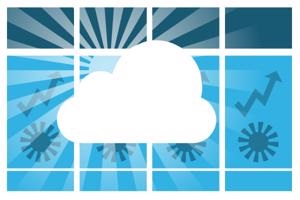
"A budget's assumptions are often outdated the moment they are finalized."
This lament is heard often from FP&A professionals in organizations that still rely on the annual budgeting process. Reliant on spreadsheets and disjointed sources of data, the break-neck pace of change in the business environment often renders the annual budget’s assumptions outdated as soon as their recorded. Decisions are made all year on those out-of-date assumptions, which can make response and reaction to changing market nearly impossible.
"The fundamental problem I have with budgets is that they are all based on assumptions that turn out to be wrong," noted Steve Player, North America program director for the Beyond Budgeting Round Table, via CFO Magazine. "Sometimes the economy comes in stronger, sometimes it comes in weaker. The budget locks everyone into an annual cycle. We need to be moving faster than that, to be more agile."
Annual budgets don’t enable companies to be “agile,” but they can unfortunately enable:
- Foggy accountability, as the budget is handled by multiple people in multiple departments in the organization and conflicts arise about how targets are set and who is responsible for hitting them.
- Sub-optimal utilization of resources, since the annual budget costs a lot of time and money and the budget is outdated once published.
- Out-of-sync company strategy, due to its static character and inability to be easily updated with fresh insights from a changing business environment.
- Ongoing use of legacy financial tools (e.g., spreadsheets) that were ideal for monolithic budgeting but never well-suited to the agile, cloud-enabled processes that SMBs now expect.
So what is the alternative to the annual slog of creating a budget and then being inevitably discouraged when its constraints do not align with your SMB's actual day-to-day operations? There are plenty of blueprints for more effective processes, such as the rapid, regular releases that constitute continuous integration in software development and testing. Translating this methodology to company finances has already been done in the form of rolling forecasts.
How rolling forecasts provide a huge upgrade over annual budgeting
A rolling forecast involves ongoing planning and analysis. It is regularly updated in accordance with a standardized revision process, and its projections extend beyond the 12-month window typically used by traditional forecasts, for four to eight additional months. The idea is to give everyone more room to proactively view and update finances, without being trapped within the confines of the annual budget and its snapshot in time.
It's time to move past the annual budget.
What benefits do teams get from making the switch to rolling forecasts? For starters, the burden of "the budget" is removed and turned into something much more approachable and manageable - it becomes a malleable part of the business, instead of something that seems almost to exist outside of it. Collaborative planning becomes easier, managers get access to timely financial information and forecasts are ultimately based on up-to-date business drivers rather than outmoded data from when the annual budget was created.
The advantages of rolling forecasts are pretty straightforward, leaving the question of how SMBs can actually obtain them. A few useful steps include:
- Moving past Excel: Spreadsheets are simple to use but are not suited to advanced forecasting and budgeting. Lack of drill-down functionality means that granular details are in short supply, plus there is a high chance of incurring costly errors during rote manual data entry.
- Using key business drivers in forecasts: Incorporating drivers for revenue, volume and share is very useful in improving forecast quality. Sharing analytical data and conducting profitability analyses becomes much easier than before.
- Performing scenario analysis: Forecast accuracy across one month - let alone an entire year - is mostly a myth, meaning that a good forecast is not determined by its initial projections but by its adaptability and dynamism. Adjustments are critical to making better decisions and aligning costs with revenues.
- Implementing cross-functional alignment: The traditional budget is such a drag because it is often disconnected from real activities. Modeling, monitoring and execution should be coordinated across all departments, from sales to finance.
- Adopting cloud-based software: New tools such as Adaptive Insights can be managed through annual subscriptions, automatic updates and bundled infrastructure maintenance.
Want to Learn More about Rolling Forecasts?
 You can make your entire organization more agile and responsive to changing business requirements by retiring your annual budget. If you’re ready to move beyond static planning and make rolling forecasts your reality with cloud-based solutions, contact the experts at RKL eSolutions today.
You can make your entire organization more agile and responsive to changing business requirements by retiring your annual budget. If you’re ready to move beyond static planning and make rolling forecasts your reality with cloud-based solutions, contact the experts at RKL eSolutions today.
Contact Us!
>>Check out these blog posts below for more information about Forecasting Software:
7 Deadly Sins of Financial Management and 1 Big Solution
Rolling Forecast Software: Ditch your Annual Budget for a Rolling Forecast
Originally published: http://success.arxistechnology.com/blog/annual-budget-rolling-forecast



